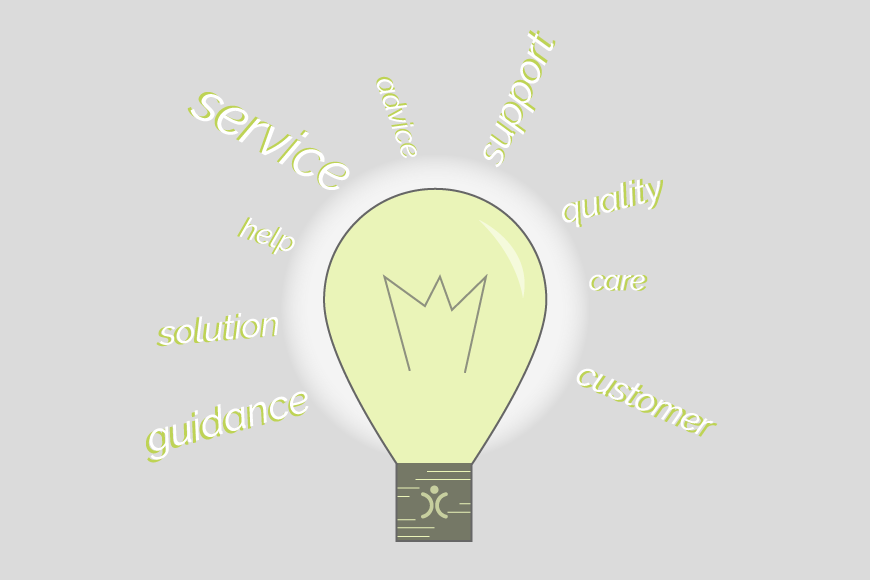Exploring what makes the customer relationship tick
25 Sep 2023
(Republished from earlier article)
When it comes to keeping your customers happy, you know it’s all about the customer relationship.
But what do you do when that relationship starts to decline? How do you fix it? Or maybe you just want to generally improve on it?
Our MD has been thinking about the things we can learn about the customer relationship from a certain famous comedy sketch…
This article can also be found in Business Direction, Business Intelligence, and Business Comment.
Whenever I think of the dynamics of the provider-to-customer relationship, my mind inevitably goes to the infamous Two Ronnies’ “Four Candles” sketch.
That back and forth between what the customer expects, what the provider understands, and the exasperation on both sides when it goes wrong. The reason we all love that sketch so much…besides the misunderstandings and the general outrage of Ronnie Corbett…is that we can all relate to what is happening.
Now of course shops have changed a lot since the sketch was written (although Coronavirus has turned back the clock in some). But how often have you gone into a shop looking for something only to find it hidden in an unexpected place? Or asked a question on live chat and spent more time explaining what you mean than you do getting the answer?
It’s the same as asking for “four candles” and getting “fork handles”—a level of frustration and confusion on both sides of the counter.
So how do you as a retailer or service provider prevent this?
The answer is simple, but the process to actually implement it is anything but.
You need to really put yourself in your customer’s shoes, understand where they are coming from and what they expect from you. Think about Ronnie Corbett, he only stopped the endless cycle of frustration by snatching Ronnie Barker’s list.
He found a way into his customer’s brain.
Now that’s easy when someone walks in with a list. But the real world isn’t usually so obliging.
And let’s be honest, it’s not just about preventing frustration. These people are your customers. They pay your bills and give your business (and your employees) purpose. Most, if not all, of your business’ goals revolve around them.
They expect value from you, your team, and your product or service.
And the only way to give them that is to understand what value they expect: What is on their shopping list when they come to you?
Getting that shopping list from your customers
Aside from asking your customers for a list (or grabbing it out of their hands in frustration), how do you find out what your customers actually want from you?
In my experience, there are three key places to look for this information. I like to think of them as the Three S’s of customer relationship management:
- Sales,
- Surveys, and
- Swearing
Sales
The first is probably the one that is the easiest to get solid information about (at least if you have a good CRM system). Looking at sales patterns and performance will tell you where your customers are spending their money. Voting with their wallets, as it were.
When the sales go down in a particular area, you know your customers aren’t seeing the value anymore (or at least not as much). When sales go up or stay consistent, you know the value is being felt. Although you can’t take it for granted that high performance will always stay high, sales data will give you the broad strokes of how your customers are feeling (and expecting from you).
Surveys
The second S of customer relationships is going the direct route and basically asking your customer for their shopping list. Or rather, asking them how they feel about their shopping list following an interaction with your team.
Did they get everything they wanted? How did they find the service? Will they be coming back?
Imagine a little survey at the end of the Four Candles sketch…was Ronnie Barker happy with his purchases? Probably. Was he equally happy about the service? Possibly not.
This direct method will give you an idea of what your customers think and how much they value what you are doing.
But keep in mind that most people often only respond to surveys if they’re REALLY happy or REALLY angry. So those in between people will have to tell you how they’re feeling via their purchases.
Swearing
Although you’ll get a feel for how angry your customers are if you are carrying out surveys, there is another place to look for negative feelings about the value of that customer relationship.
The obvious one is, of course, complaints. If you get a lot of complaints, especially sweary complaints, you know something is going wrong. But that really belongs under the “survey” heading in the past section.
The “swearing” I’m actually referring to here from your team.
If your customer facing teams are frequently frustrated with your customers, it’s a good indicator that something is going wrong with your customer relationship. Pay attention to this and try to find out where things are going wrong.
Think about Four Candles one last time, Ronnie Barker may have felt ambivalent about his shopping experience, but Ronnie Corbett certainly didn’t. And if his frustration got carried over to every other customer interaction he had that day (and if those interactions followed similar paths), it doesn’t take a genius to work out that this will affect his sales. And the value his customers are placing on them.
So my advice?
Pay attention to what your customers are doing (sales) and saying (surveys), but also listen to how your team is feeling (and if they’re swearing).
These three things will give you a window into customer relationships and what you can do to improve them.